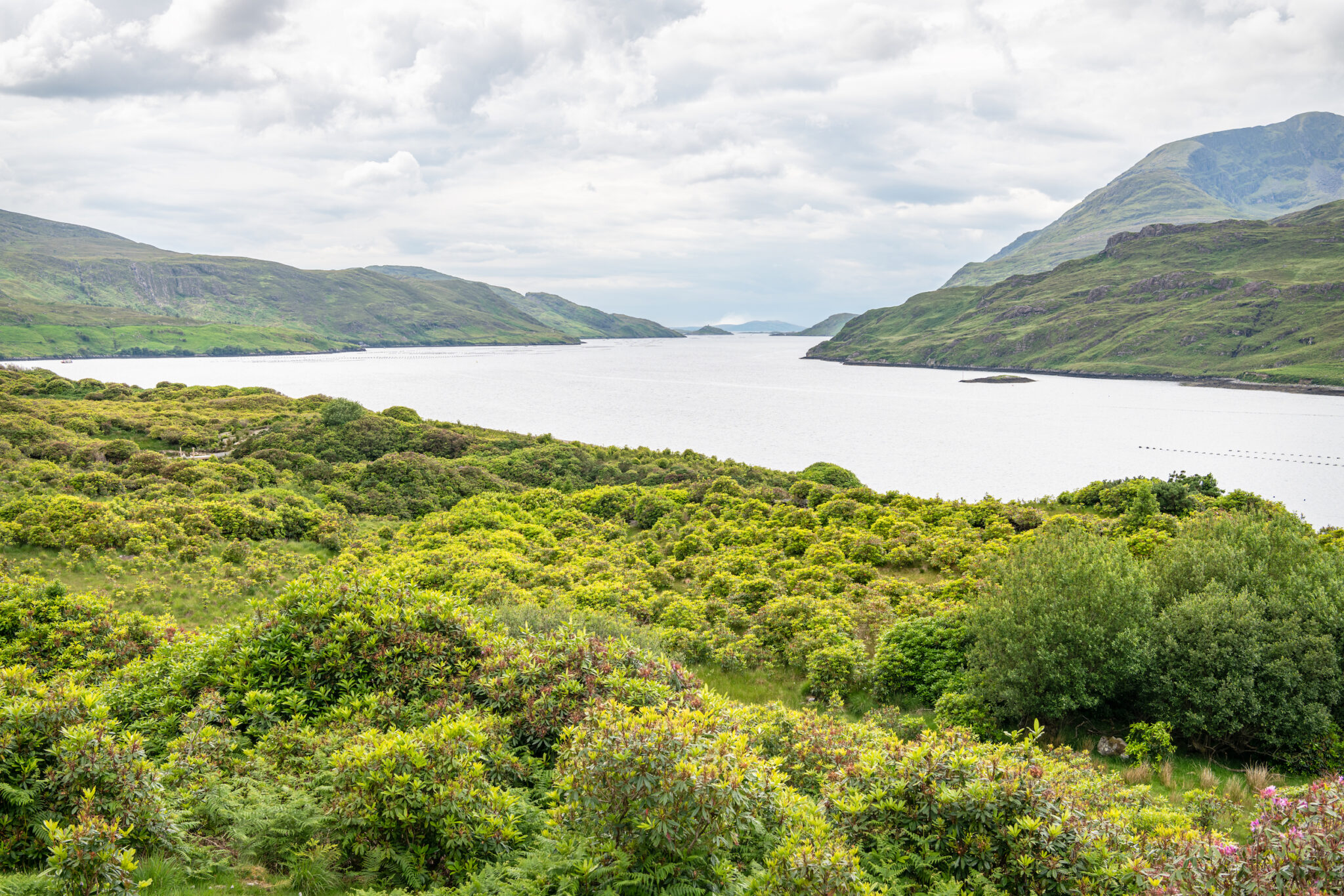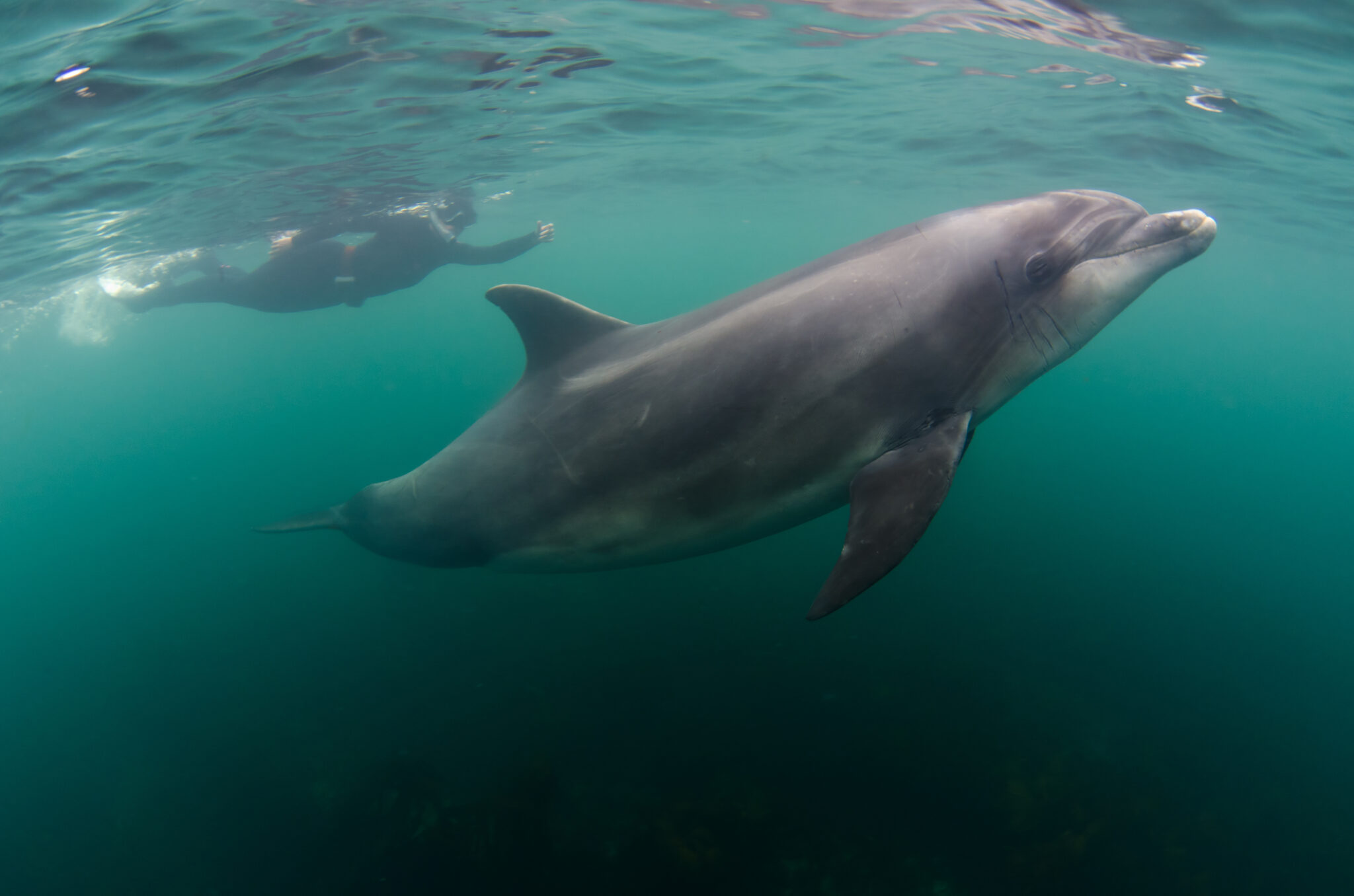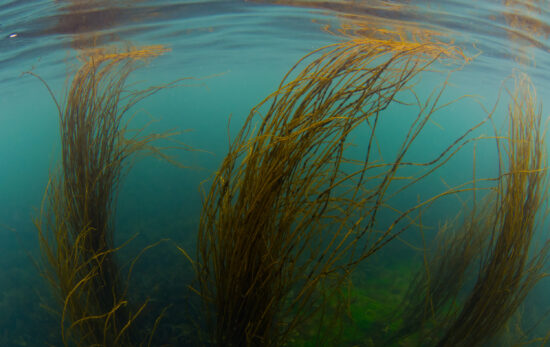There’s no doubt that Ireland is world-renowned for its scenery above water. But what many people don’t realize is that some of Ireland’s most breathtaking scenery is actually below the surface. If you find yourself diving in Ireland, count yourself lucky!
All around the ‘Emerald Isle‘, divers can find an incredible variety of dive sites and marine life – often in spectacular visibility. Lush kelp forests and rocky reefs are home to playful seals and a myriad of invertebrates like lobsters. Shipwrecks reveal hidden maritime history as well as bustling ecosystems made up of colorful anemones and large schools of pollock. Marine megafauna like dolphins, whales, and even basking sharks are known to inhabit coastal waters all around this magical island.
While the water around Ireland is certainly temperate, the warm Gulf Stream waters that flow here actually offer pleasant year-round diving. In fact, water temperatures only vary slightly over the course of the year. Most local divers invest in a dry suit to stay warm and comfortable. We recommend earning the PADI Dry Suit Diver certification before diving in Ireland.
For those local to the island, or those that plan to visit, here are six of Ireland’s luckiest dive sites:

Tory Island
Off the north-west coast of Ireland, approximately 14.5 kilometers (9 miles) offshore of Donegal, lies Tory Island. The diving here can be challenging due to the island’s remoteness and potential for extreme weather conditions – but when the weather is on your side, the magic of Tory Island is clear. In calm conditions, divers can enjoy up to 30 meters (98 feet) of visibility.
Adventurous divers that slip beneath the surface here, are sure to be rewarded with magnificent marine life encounters. Wildlife sightings in the area include dolphins, whales, and even basking sharks. Above the surface, marine birds like cormorants and puffins use the jagged cliffs for nesting. Some lucky divers might even see these feathered friends ‘swim’ by in search of food.
The underwater seascape includes rock gullies, caves, and kelp forests. Another highlight of diving Tory Island is the 1884 wreck of the HMS Wasp. Just off the island, this wreck rests at about 15 meters (50 feet), and has two cannons still visible.
Killary Harbor
On Ireland’s central west coast, lies a majestic fjord known as Killary Harbor. Sandwiched between two mountain ranges, the backdrop to any dive here is sure to be stunningly beautiful. The sheltered nature of this waterway provides excellent visibility throughout most of the year – with visibility typically ranging from 10 – 20 meters (33 to 65 feet). At its most brilliant, divers have reported up to 50 meters (160 feet) of visibility in Killary Harbor!
Dense kelp forests reveal a surprising abundance of marine life including conger eels, wrasses, lobsters, and large schools of pollock. Marine mammals like dolphins, whales, and grey seals are even spotted in the fjord during the late summer. Watch out – the grey seals are notoriously playful in this area!
Wreck diving is also popular in Killary Harbor, with wrecks like the Julia T at 27 meters (90 feet) and the Rath Connla at 16 meters (52 feet). Divers exploring these shipwrecks will be dazzled by the intricate invertebrates like anemones, scallops, tube worms, and whelks that cover them. Because of its glacially deepened nature, the harbor reaches depths of about 40 meters (131 feet) allowing for deep water diving. For divers that love depth, consider earning the PADI Deep Diver certification. Whatever depth you plan to reach, shore diving and boat diving are both good options here.

Diamond Rocks
Named for the quartz crystals in the rocks, which glisten in the sunshine, Diamond Rocks is certainly one of Ireland’s luckiest and most sparkly dive sites. Not to mention, because the bay is sheltered, the visibility at this location is often crystal clear!
In the cracks and crevices of the glistening rocks, divers are amazed by the abundance of invertebrates – including spider crabs – that live here. Dolphins and seals are also commonly encountered at this County Clare dive site. So be on the lookout for these charismatic marine mammals.
Diamond Rocks is accessible by boat as well as by land. Be aware that a successful shore dive here will involve getting down a dirt path and maneuvering over rocks to enter the water. However, once you’re in the water, you’ll find the bustling rocky reef at a depth of approximately 6 – 9 meters (20 – 30 feet). From there, for those that want to explore deeper, the sea-facing reef falls off gradually all the way down to about 40 meters (130 feet).
Fanore
County Clare, on Ireland’s central west coast is home to a magical dive site just off the small village of Fanore. For those that love shore diving, this is an ideal place. A spectacular rocky reef lies roughly 50 meters (165 feet) off the shore. The reef contains a myriad of nooks and crannies, caves, and semi-circular caverns. Approximate depth at Fanore is 15 meters (50 feet).
In combination with the warm Gulf Stream waters that flow directly to this region, the reef reveals an amazing variety of marine animals and plants. Plus, the visibility here is absolutely brilliant! To top it all off, dolphins frequent these waters – making this one of the most ideal locations in Ireland to dive with dolphins. Because of this, Fanore is also a popular freediving spot. We recommend earning the PADI Freediver certification.

MV Kowloon Bridge
The 295 meter (968 foot) long MV Kowloon Bridge, which sank in 1986, is one of Ireland’s most well-known and admired dive sites. Located just off Bantry Bay in the south-west, it is the largest shipwreck in Europe and the largest by tonnage in the world. After running aground on Stag Rocks, the ship sank in approximately 40 meters (130 feet) of water. Due to the size of the wreck and the angle at which it sits, divers can choose from a variety of depths – even as shallow as 6 meters (20 feet).
Despite the environmental damage caused by the wreck’s oil spill, local divers say that ocean life has rebounded. The shipwreck is now home to an incredible variety of flora and fauna including wrasses, pollock, lobsters, and anemones. Remarkably, all this marine life coexists with 165,000 tons of iron ore that was the MV Kowloon’s cargo. And it’s still clearly visible on the sea floor.
Strong currents and tides are common here, so slack water diving and careful planning is encouraged. Before visiting this top-notch County Cork dive site, we recommend earning the PADI Wreck Diver certification.
Dalkey Island
Amazingly, one of Ireland’s top dive sites is only about 16 kilometers (10 miles) south of the capitol of Dublin. Dalkey Island is a small, uninhabited island that is only accessible by boat – perfect for a day trip! With a long history dating back to the Stone Age, the only above-surface residents today are wild goats and lots of sea birds.
The remote setting of Dalkey Island enables a wonderful variety of marine life to flourish below the surface. Each side of the island offers different opportunities – from lush kelp forests to rocky reefs complete with ledges and boulders. Divers here are often delighted by invertebrates like anemones, sponges, crabs, lobsters, and brittle stars. Scorpionfish and dogfish are also regularly spotted. But certainly no dive trip to Dalkey Island is complete without a visit from the local, very playful, grey seals.
Diving is possible on all sides of the island, but strong rip tides and currents are ever-present and ever-changing here. Be sure to plan carefully before descending.

Inspired to Dive in Ireland?
If you’re lucky enough to call Ireland home and are looking to explore some spectacular local dive sites, check out these resources:
- Not a certified diver yet? You can start your diving journey online right now via PADI eLearning before connecting with a PADI Dive Center to complete your in water training. Learning to Live Unfiltered in Ireland will benefit your mental health and help you explore Ireland’s luckiest dive sites.
- Already a certified diver? Use PADI Adventures – the ultimate local diving app – to find and book your next diving adventure or course (like the ones recommend above) in Ireland.
If you’re excited to start planning your next dive trip to Ireland, make sure to check out these additional resources:



